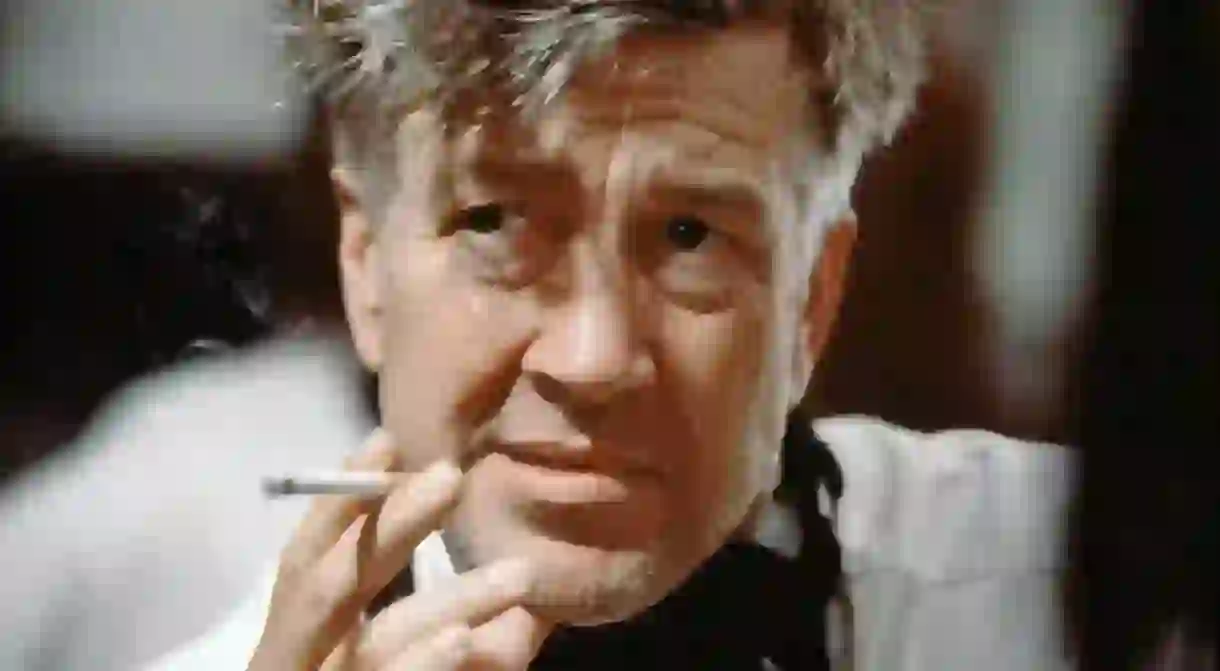David Lynch's Surprising Antidote for Tortured Artists

It may come as a surprise to hear that the creator of Twin Peaks and Eraserhead rests easy. But acclaimed cult filmmaker and visual artist David Lynch has tapped into a place of inner peace despite the surreal, disturbing worlds he so skillfully constructs. In the 1970s, Lynch began experimenting with transcendental meditation, a practice that helped him to master the macabre without succumbing to it. His secret? Never suffer for your art.
As one of the most revered living filmmakers, David Lynch has enjoyed 40-odd years of success. In August 2016, Mulholland Drive (2001) was voted the most important film of the 21st century; in September 2016, Lynch was the subject of a lauded documentary profiling his lesser-known life as a visual artist; in May 2017, Twin Peaks (1990–1991) returned as per Laura Palmer’s memorable prophecy: “I’ll see you again in 25 years.” Lynch’s cinematic style is instantly recognizable, and he’s accrued a devoted cult following for his lovably disenfranchised characters—both the pure and the dangerous ones.

Upon surveying his masterpieces, from Blue Velvet (1986) to Fire Walk with Me (1992), it would appear that David Lynch is entirely disturbed. It would make perfect sense, after all, given the unwavering stereotype of the “tortured artist.” Lynch’s macabre portfolio of paintings and drawings from his art school days up to recent years is equally sinister, existing somewhere between Francis Bacon’s distorted figures and Stephen Gammell’s nightmare-inducing illustrations for Scary Stories to Tell in the Dark.
While studies consistently reveal links between creativity and mental illness, Lynch argues that you don’t have to suffer for your art. In fact, suffering can obstruct artistic exploration. “Real suffering is something we don’t want…it is a joke for creativity,” Lynch once explained in an interview with The Guardian. The director recalls his time at art school when he believed he could only depict suffering if he was suffering himself. But in 1973, David Lynch began practicing transcendental meditation (TM), and has never looked back. In fact, he believes so deeply in the exercise that he launched a foundation dedicated to it in 2005.
https://www.instagram.com/p/BCvK60HCwSe/?taken-by=davidlynchfoundation&hl=en
In short, TM is a 15- to 20-minute form of mantra meditation that teaches the art of restful awareness and introspection. Simply sit in a chair with your eyes closed twice a day (once in the morning and again before bed) while you silently breathe and reflect. But a brief private session with a professional will set you back just under $1,000 (£819). Acknowledging the general inaccessibility of such a price tag, the filmmaker founded the David Lynch Foundation For Consciousness-Based Education and Peace to share his wisdom free of financial burden.
https://www.instagram.com/p/9Jm6cWCwdt/?taken-by=davidlynchfoundation&hl=en
“It’s not a cult, it’s not a religion. It’s not a philosophy. It’s not a change in lifestyle. There’s nothing to believe in. It’s a simple tool that gives any and every human access to a reservoir of creativity and intelligence that is said to lie deep within at the quietest level of the conscious mind,” the foundation’s CEO, Bob Roth, said in a recent interview with Format Magazine. “Artists are not immune to the collective consciousness of the world. They have insomnia. They feel pressures, whether it’s pressures in family, in relationships, with not sleeping well, or anxiety, or depression, and if it gets too much, it just shuts everything down. [With TM], they’re just more themselves, more powerful, more expressive.”

TM can teach artists to maximize their creativity beyond the canvas by encouraging a holistically creative lifestyle. “All I wanted to do was paint—it was like I couldn’t control it,” Lynch reflects in The Art Life. “I could imagine a whole world that doesn’t exist. I had tremendous freedom. My own little place that… really would be such a world.”













